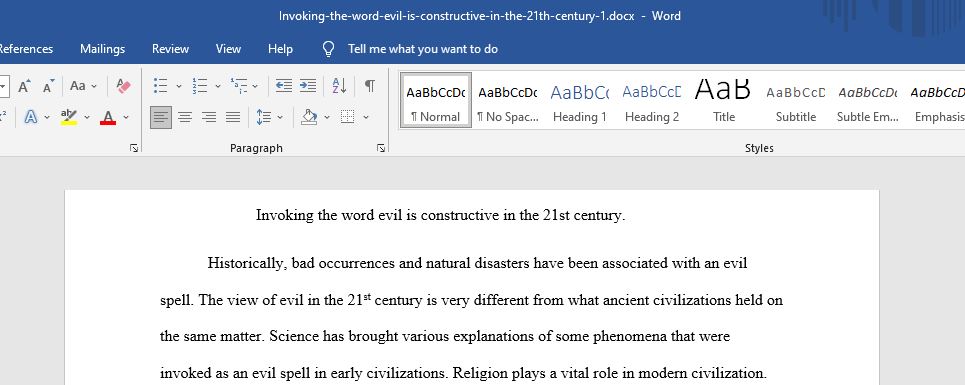Invoking the word evil is constructive in the 21st century.
Task:
Much has changed in the world since early civilizations thought that natural disasters were manifestations of evil. For example, science allows us to understand the interconnectivity between severe storms and changes in our environment.
While religion still plays a large part in many people’s lives, we have become much more secular as a society overall.
Finally, many of us enjoy stories of the supernatural but acknowledge that these stories are sources of entertainment that engage our imaginations rather than realistic depictions of events.
Consider all of these changes and then take a position on whether or not invoking the word evil is constructive in the 21th century.
You may find these questions helpful during the inquiry:
- What is gained or lost when the word is used?
- What are objective criteria that can be used to measure evil?
- What might make the use of the word problematic? For whom? Under which circumstances? Why?
Integrate a minimum of three primary and/or secondary sources to support and defend the position you have taken after analyzing the pertinent data and information. While you may make reference to the works that we have read and discussed in class, the main research for the project needs to consist of sources with which we have not previously engaged.
Be sure to vet potential sources carefully. It is preferable to work only with peer reviewed sources. The reference librarians are always available to provide assistance. Do not hesitate to reach out to them.
Present your original argument in a unified, coherent, and fully developed analysis.
Technical Details:
- Length: 3- 5 pages including the works cited section, which can be placed immediately at the end of the concluding paragraph. Please adhere to this length. Projects that are longer tend to lose focus and, consequently, do not aid the author in making a strong argument.
- The title reflects the main point of the author’s argument and aims to engage readers. It is not necessary to have a title page for this project.
- Compose the analysis in the third person. The occasional use of the first person is permissible. Avoid using the second person pronouns or referents. Visit this site for more information on point of view.
- Effective three-part structure (introduction, supporting paragraphs, conclusion)
- Follow MLA style principles for integrating, cross-referencing, and documenting sources. Use signal phrases to introduce quotations and paraphrases, in-text citations, and works cited citations. Consult MLA . If you have any questions about integrating and documenting sources, be sure to contact me so that I can assist.
- Double space the entire document including the works cited citations
- Use an easy to read font, size 12
Answer preview:
Word: 1,600

